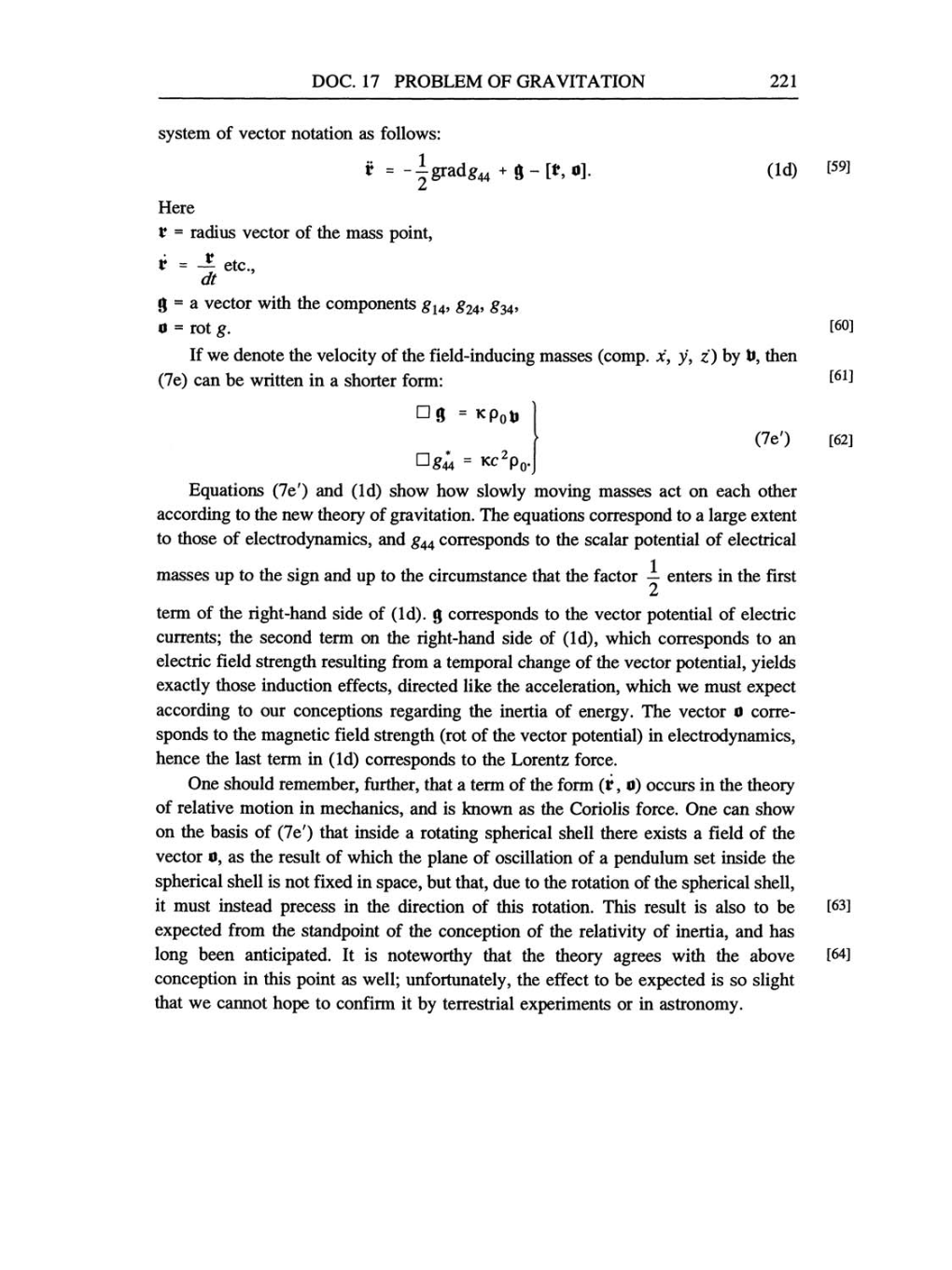DOC.
17
PROBLEM OF GRAVITATION
221
system
of
vector notation
as
follows:
-3,gradg44
+.g-[r,o].
(1d)
[59]
Here
t
=
radius
vector
of the
mass
point,
r
=
r/dt
etc.,
g
=
a
vector
with the
components
g14,
g24, g34,
o
=
rot
g.
[60]
If
we
denote the
velocity
of
the
field-inducing
masses
(comp.
x,
y,
z)
by
D,
then
(7e) can
be
written in
a
shorter form:
[61]
g
Kp0u
_ (7e')
*
2 IIg~=Kc
p0.
[62]
Equations (7e')
and
(1d)
show how
slowly moving
masses
act
on
each
other
according
to the
new theory
of
gravitation.
The
equations correspond
to
a
large
extent
to
those
of
electrodynamics,
and
g44
corresponds
to
the scalar
potential
of
electrical
masses
up
to
the
sign
and
up
to
the
circumstance that the factor
1/2
enters
in the first
term
of
the
right-hand
side of
(1d). g
corresponds
to
the
vector
potential
of
electric
currents;
the
second term
on
the
right-hand
side of
(1d),
which
corresponds
to
an
electric field
strength resulting
from
a temporal change
of
the vector
potential, yields
exactly
those
induction
effects,
directed like the
acceleration,
which
we
must
expect
according
to
our
conceptions regarding
the inertia of
energy.
The
vector
o
corre-
sponds
to
the
magnetic
field
strength
(rot
of
the vector
potential)
in
electrodynamics,
hence the last
term
in
(1d) corresponds
to
the Lorentz force.
One should
remember, further,
that
a
term
of the form (r,
0) occurs
in the
theory
of relative motion in
mechanics,
and is known
as
the Coriolis force. One
can
show
on
the
basis
of
(7e')
that inside
a
rotating
spherical
shell there exists
a
field
of
the
vector
o,
as
the result
of
which the
plane
of
oscillation of
a pendulum
set
inside the
spherical
shell is not fixed in
space,
but
that,
due
to
the
rotation
of
the
spherical
shell,
it
must instead
precess
in the direction
of
this rotation. This result is also
to
be
[63]
expected
from the
standpoint
of
the
conception
of the
relativity
of
inertia,
and has
long
been
anticipated.
It is
noteworthy
that the
theory agrees
with the above
[64]
conception
in this
point
as
well;
unfortunately,
the effect
to
be
expected
is
so slight
that
we
cannot
hope
to
confirm it
by
terrestrial
experiments
or
in
astronomy.
